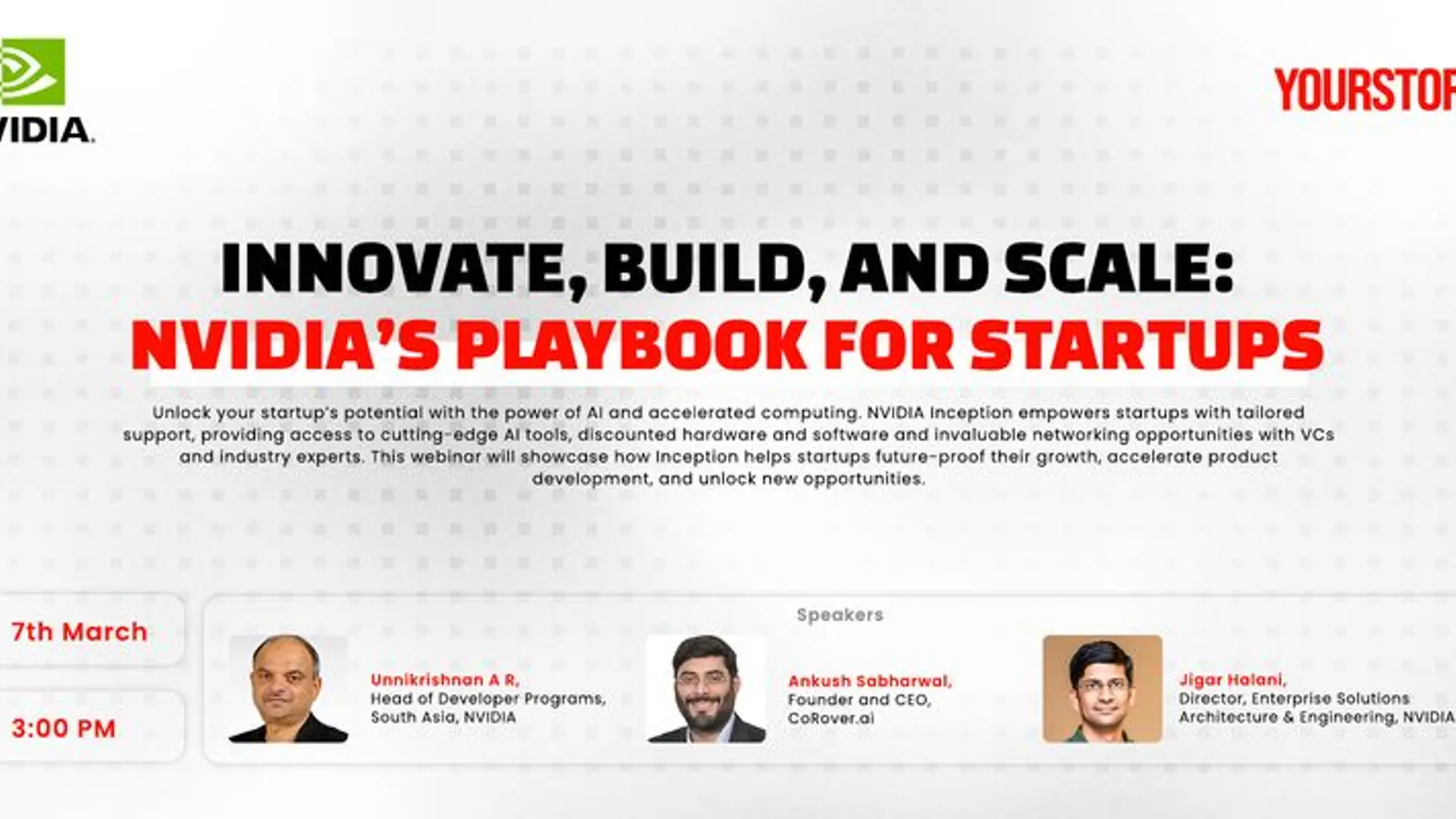From reinvention to resilience: how exponential technologies call for business transformation
Two expert authors join us in this interview on tech trends, business innovation, and culture change.
A wealth of checklists, tips, and examples of business innovation is featured in the new book, From Incremental to Exponential: How Large Companies can See the Future and Rethink Innovation, by Vivek Wadhwa, Ismail Amila, and Alex Salkever (see my book review here).
Vivek Wadhwa has been researching, teaching, and consulting in technology development and innovation for over a decade at universities such as Stanford, Duke, Harvard, and Carnegie Mellon. His earlier books include The Immigrant Exodus (see my book review here).
Ismail Amla is Chief Growth Officer of Capita, and Alex Salkever is the co-author (with Vivek) of The Immigrant Exodus, The Driver in the Driverless Car, and Your Happiness Was Hacked.
See also YourStory’s Book Review section with takeaways from over 290 titles on creativity, entrepreneurship, innovation, social enterprise, and digital transformation.
Vivek and Ismail join us in this chat on business innovation in the pandemic era, examples of innovative cultures, and opportunities for entrepreneurs.
Edited excerpts from the interview:
YourStory (YS): What is your current area of research within innovation?
Vivek: As the world has changed overnight, I’m interested in how organisations are adapting and adjusting to their new reality. What are the key characteristics of the most resilient organisations, and how can businesses embrace innovation better?
YS: In the time since your book was published, what are some notable new examples of large-firm innovation that you have come across?
Vivek: The COVID-19 pandemic has accelerated innovation like never before. We’ve seen organisations of all sizes forced to innovate, and the ones that are able to quickly accept and respond to change are those that will survive. You’ve got to embrace change and use it.
Permission to break the rules has never been stronger – this is really positive for business.
Ismail: Take Capita, for example. At the start of the pandemic, we quickly facilitated the technology and processes necessary to move 20,000 call centre colleagues to working from home. We achieved this in just three weeks after talking about it for years.
In the US, Cruise, General Motors’ autonomous car division, recently brought its self-driving cars out of dormancy to deliver supplies around San Francisco for two local food banks. Under current regulations, self-driving cars are deemed non-essential and aren’t allowed on the roads.
But helping the food banks like this frees up their volunteers to focus on the vulnerable people who use them and, at the same time, allows Cruise to test its technology in a way it has never been able to before.
We’ve also seen supermarket chains quickly pivoting to click-and-collect and delivery services, along with dark stores in the US – those that don’t allow customers in but just fulfill deliveries.
One of the cornerstones of large-firm innovation has to be customer-centricity, fuelled by data. Sainsbury’s had already taken an important step towards customer-centric innovation before the COVID-19 pandemic started. With 27 million customers, the grocer is one of the premier placement options for any food or drink brand in Europe, let alone the UK.
But getting a product onto its shelves is a lengthy and expensive journey for any new, unknown brand. Sainsbury’s is addressing this through its Future Brands team, which uses its market strength to drive and accelerate innovation – it’s helping itself to continue to dominate the market by helping its customers to enjoy a wider range of new products.

YS: How was your book received? What were some of the responses and reactions you got?
Vivek & Ismail: We’ve received an incredibly positive reception to date, with global business leaders calling it “an invaluable road map” and “a wake-up call” for organisations. Here are some of them.
Satya Nadella, CEO of Microsoft: “Vivek and Ismail offer incumbent businesses and brands a powerful set of examples and tools for intensifying their adoption of platform technologies, embracing a growth mindset, and building their comparative advantage. This timely book reminds us that innovation is agnostic about where it’s created.”
Prof. Lynda Gratton, London Business School: “It’s a wake-up call to anyone running a company but also a positive playbook of those breakthrough responses that could make the difference between success and failure – boosting innovation metabolism and increasing the chances of survival.”
Indra Nooyi, former CEO at PepsiCo: “Technology is indeed moving faster and upending entire industries. Companies that can learn from the new rules of innovation stand to benefit from these disruptions. Vivek and Ismail’s book provides an invaluable road map for business executives in how to reinvent their companies – and own the future.”
YS: What are the typical challenges that entrepreneurs face as they scale up their companies? How can they make sure they don’t lose their innovation edge?
Vivek and Ismail: Entrepreneurs face the challenge of operating and scaling fast. This often means taking the easy route – doing things the way they have always been done and favouring what works. If a business is truly innovative, it embraces a culture of constant change.
Leading innovators operate four times faster than less nimble peers because they have a quicker turnaround and action on reviewing and making strategies, allocating resources, and putting capital to work.
But it’s not just about speed. Entrepreneurs can ensure they don’t lose their innovation edge by basing their decisions on data, which gives them a scientific basis.
YS: How should innovators strike that delicate balance between ‘stick to your vision’ and ‘adapt to a changed world’?
Vivek: If organisations wish to stick to their vision while adapting to a changed world, innovation has to become part of their DNA. This means that innovation is an integral part of established business processes, allowing the old and new company vision to co-exist.
In our book, we identify the following 10 principles that innovators can follow in developing and scaling innovation.
1. Encourage leaders to be coaches, not bosses, to guide for quicker project turnaround.
2. Recognise that everyone is an innovator, at every level. Even small ideas add up.
3. Identify the rulebreakers; they’ll help the organisation to think differently.
4. Ensure your innovation project teams are multidisciplinary.
5. Reward and incentivise innovation and quick turnarounds, especially from the bottom up, across all operations within the business.
6. Give all employees free access to executive and senior teams.
7. Remove distractions, barriers, and red tape within the organisation.
8. Provide support and restoration for those who are exhausted by all the duties of their regular jobs.
9. Hold essential meetings only, freeing up time for employees to get on with their jobs.
10. Allow for innovation project members to freely collaborate with external parties.
YS: What are the success factors for a startup acquisition to deliver innovation advantage to a large firm?
Vivek and Ismail: A startup’s true resilience can be proven by its ability to scale its innovations within a large firm. Some success factors include establishing processes for collaboration, and offering training.
It is also important to create a culture of innovation in which all members of the business are comfortable in engaging with senior management.

YS: Many large firms are setting up accelerators for startups to get new insights into problem-solving. How can such engagements be made more effective?
Vivek and Ismail: Innovation accelerators can only have a lasting impact on a business if leaders run them with a coaching mindset. Bosses are prescriptive and definitive; coaches question and listen, asking people to come up with their own answers, and guide rather than tell.
Smart CEOs know that they’re more effective when they’re helping, supporting, and partnering than when they’re directing from a pedestal.
CEOs therefore need to facilitate, working hand-in-hand with motivated teams. They need to motivate, keeping teams engaged and empowered. They also need to collaborate, working across siloes to solve problems more efficiently.
YS: Large firms have the size or scale advantage, and corporate groups have even more size and diversity. What innovative strategies seem to be working well for them?
Vivek: In our book, I look at how established companies are recognising their strengths and using them to foster innovation and growth in the face of new-order disruption.
In the case of Microsoft, for example, CEO Satya Nadella started with adjusting its culture to be more favourable for innovation. He knew that to safeguard the company’s future, he needed to set an entirely new tone for it and revamp its culture to make space for innovation and allow new initiatives to grow and succeed.
Nadella believed that building empathy would be central to this – a skill and mindset not previously associated with Microsoft.
Nadella’s clearest and most consequential move, though, came in March 2018, roughly four years after he became CEO. In an email to all employees titled Embracing our Future: Intelligent Cloud and Intelligent Edge, he announced that he would split the old Windows Development Group into two separate engineering groups, one called Experiences and Devices and the other called Cloud + AI Platform.
This cemented the company’s commitment to moving away from Windows and putting the bulk of its resources into projects fuelling innovation rather than stagnation. It was a bold move and one that met with much grumbling from insiders and people on the old Windows teams.
But Nadella was certain that this was Microsoft’s best path. In reality, it was the final big step in his plan to reorientate the company: it left him, and the rest of Microsoft, in a position of strength.
Microsoft’s market capitalisation has nearly quintupled, from roughly $300 billion at Nadella’s ascension to more than $1.4 trillion in early 2020, and it has become the most valuable company in the world, surpassing Apple and Google, and free to face the future. This was all rooted in a culture of humility, acceptance of change and openness to external ideas.
YS: Many large firms have activities like hackathons, internal fairs, and prizes to spur innovation. Can these be made successful beyond one-off events?
Vivek and Ismail: It’s crucial for large organisations to rethink how they approach innovation and they must provide the right conditions to encourage great ideas. Assume that everyone is an innovator: great ideas rarely come from the top.
While many of us know the origins of the Post-It note, you may not realise that 3M’s innovative 15 percent programme – encouraging employees to dedicate time to pursuing innovative ideas – has resulted in almost 23,000 patents for the company.
YS: How can an innovative culture be maintained and sustained even after the current CEO leaves?
Vivek and Ismail: While innovation has kick-started at the top, it lives on in a business through its culture and processes. True innovation should be culturally embedded, meaning that employees are used to collaborating and bold enough to drive new ideas.
The culture is solidified in the talent that a company hires, focusing on entrepreneurial, agile thinkers.
YS: You rightly point out some of the challenges facing Indian IT service firms. What innovation changes you are seeing in Indian firms?
Vivek and Ismail: Most Indian IT firms are focused on yesterday’s businesses, but a few are understanding how rapidly the markets have changed. In the book, we talk about how CP Gurnani of Tech Mahindra understood the pace of change and took risks to reinvent his company.
This is the type of leadership that will be required of all companies – or they won’t have a future.

YS: How has the COVID-19 pandemic changed some of the premises in your book? What should be the innovation mandate in the post-pandemic world?
Vivek: In the book, I set out three rules. Firstly, you have got to be on top of your data like never before – if you’re making any investment around technology, it has to focus on this.
Secondly, we have to acknowledge that leadership of remote teams isn’t the same as we’re used to. We are all learning new skills around how to do this effectively.
Thirdly, we need to drive a culture that encourages innovation. Innovation and great ideas come from collaboration at the most unlikely times, and with the most unlikely people. That doesn’t happen when we’re sat in our rooms with very prescribed diaries.
Serendipity by design is something we are learning.
YS: What are your recommendations for how NGOs or UN agencies can adopt some of the innovation principles in your book?
Vivek and Ismail:
• Understand that innovation can and will come from any direction. Take inspiration from the private sector to adapt and thrive.
• Agility is key: move away from hyper-rigid hierarchies to fluid structures that bring diverse teams together quickly to solve challenges collectively.
• Don’t stop, even for a second. Innovation is ceaseless – and your organisation must also be ceaseless in its pursuit.
YS: As we enter a new year and new decade, what are some major trends you see?
Vivek and Ismail: Practically, every technology will start advancing exponentially. They will start converging, opening up trillion-dollar opportunities for new industries while decimating old ones
YS: What is your parting message or tips to the startups and aspiring innovators in our audience?
Vivek and Ismail: Innovation has globalised. The same technologies are available anywhere in the world.
With access to these technologies, Indian entrepreneurs now have a chance to solve the problems of humanity itself while they build billion-dollar businesses.
(Edited by Megha Reddy)
Edited by Megha Reddy



![[Year in Review 2020] The Top 20 Author Interviews of the Year – on Entrepreneurship, Digital Transformation, and Storytelling](https://images.yourstory.com/cs/2/28b451402d6a11e9aa979329348d4c3e/Books12-1608143530661.jpg?fm=png&auto=format&h=100&w=100&crop=entropy&fit=crop)
![[Year in Review 2020] Here are the Top 5 Pivot and Persist stories about startups that changed their business models amidst COVID-19](https://images.yourstory.com/cs/2/fd6b2ee0c6f411e8af1c974e95f3b2db/shutterstock1207152979-1590084243782.jpg?fm=png&auto=format&h=100&w=100&crop=entropy&fit=crop)

![[TechSparks 2020] John Chambers delivers an insight-packed masterclass on being a leader in a tough dynamic](https://images.yourstory.com/cs/2/9456dfb02d6c11e9aa979329348d4c3e/Imagedx3l-1604059003852.jpg?fm=png&auto=format&h=100&w=100&crop=entropy&fit=crop)




